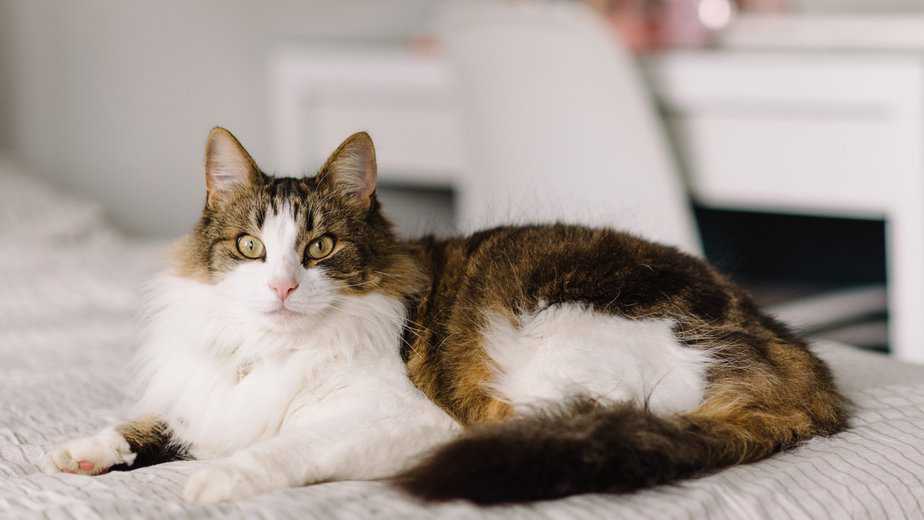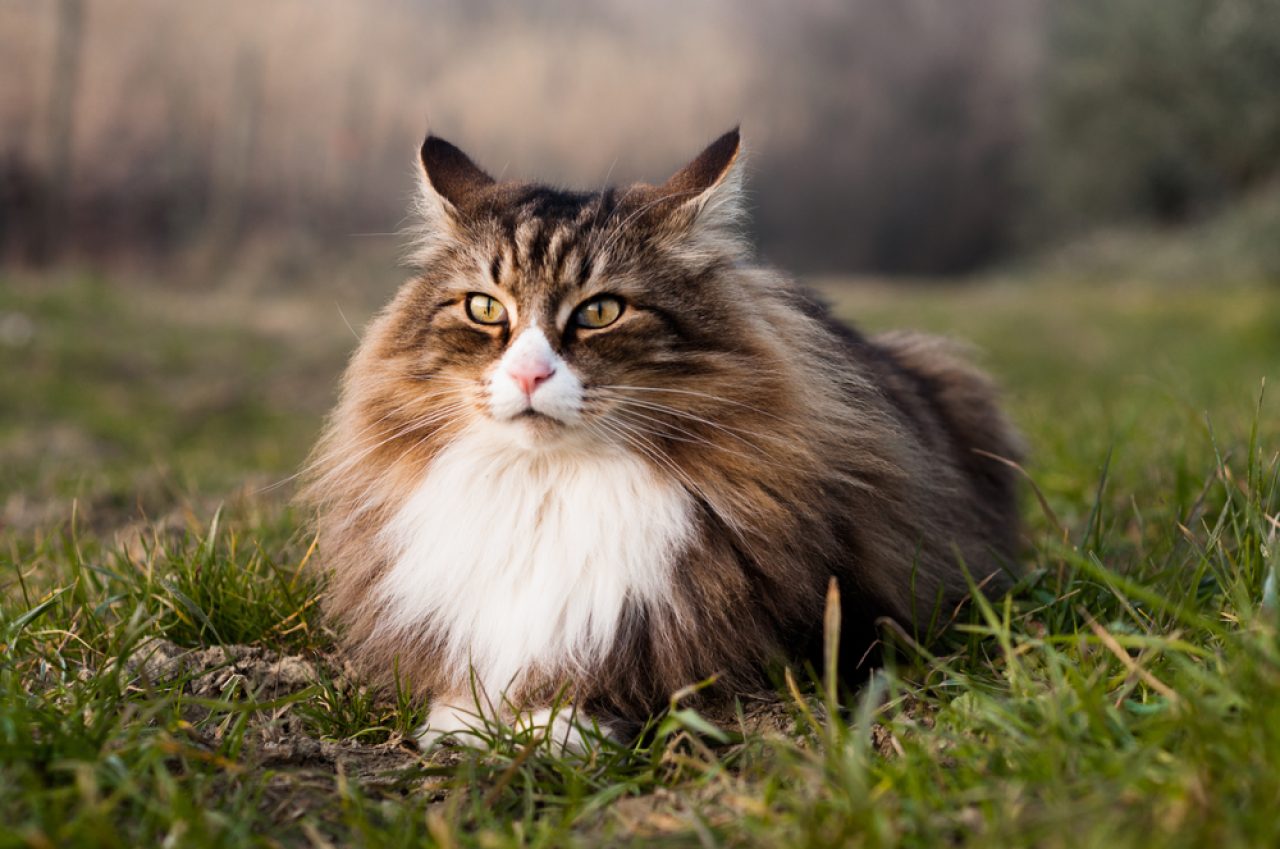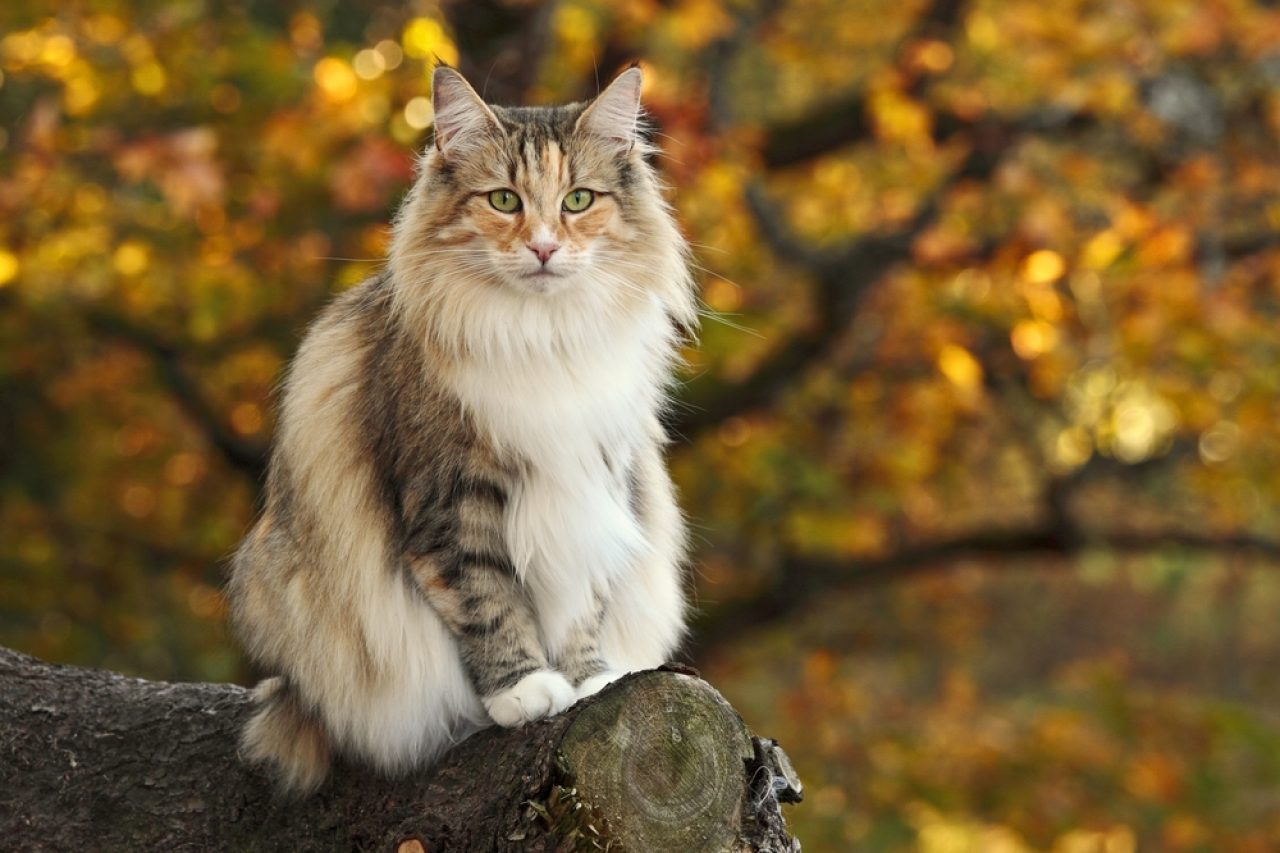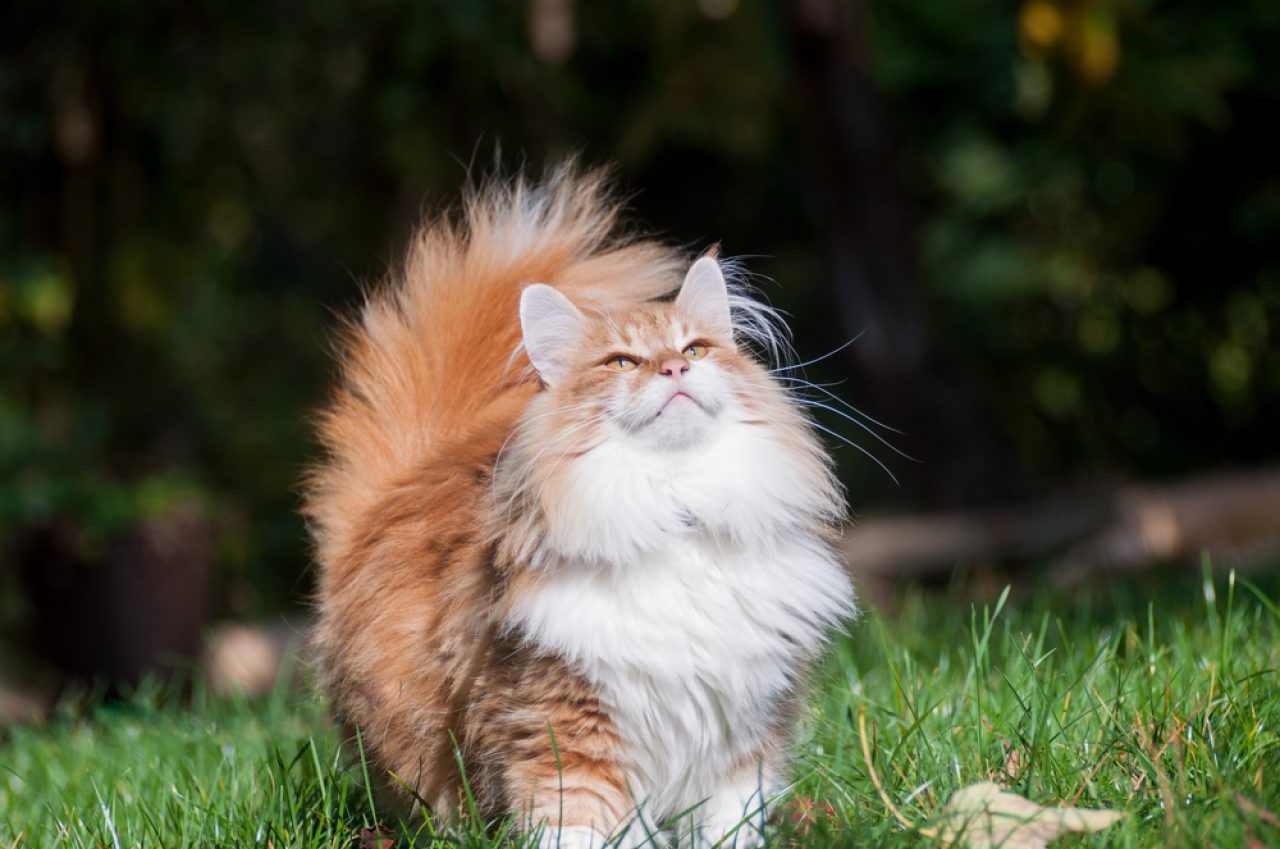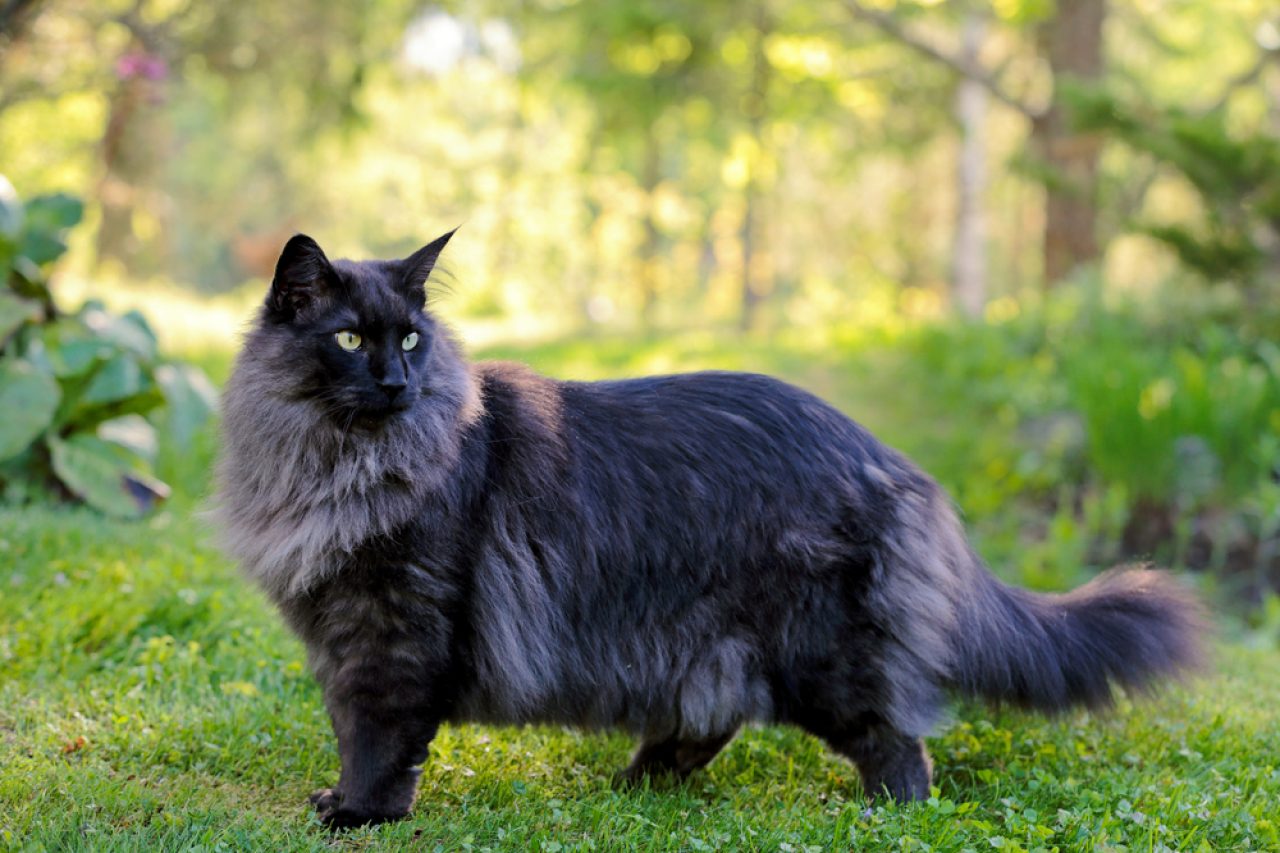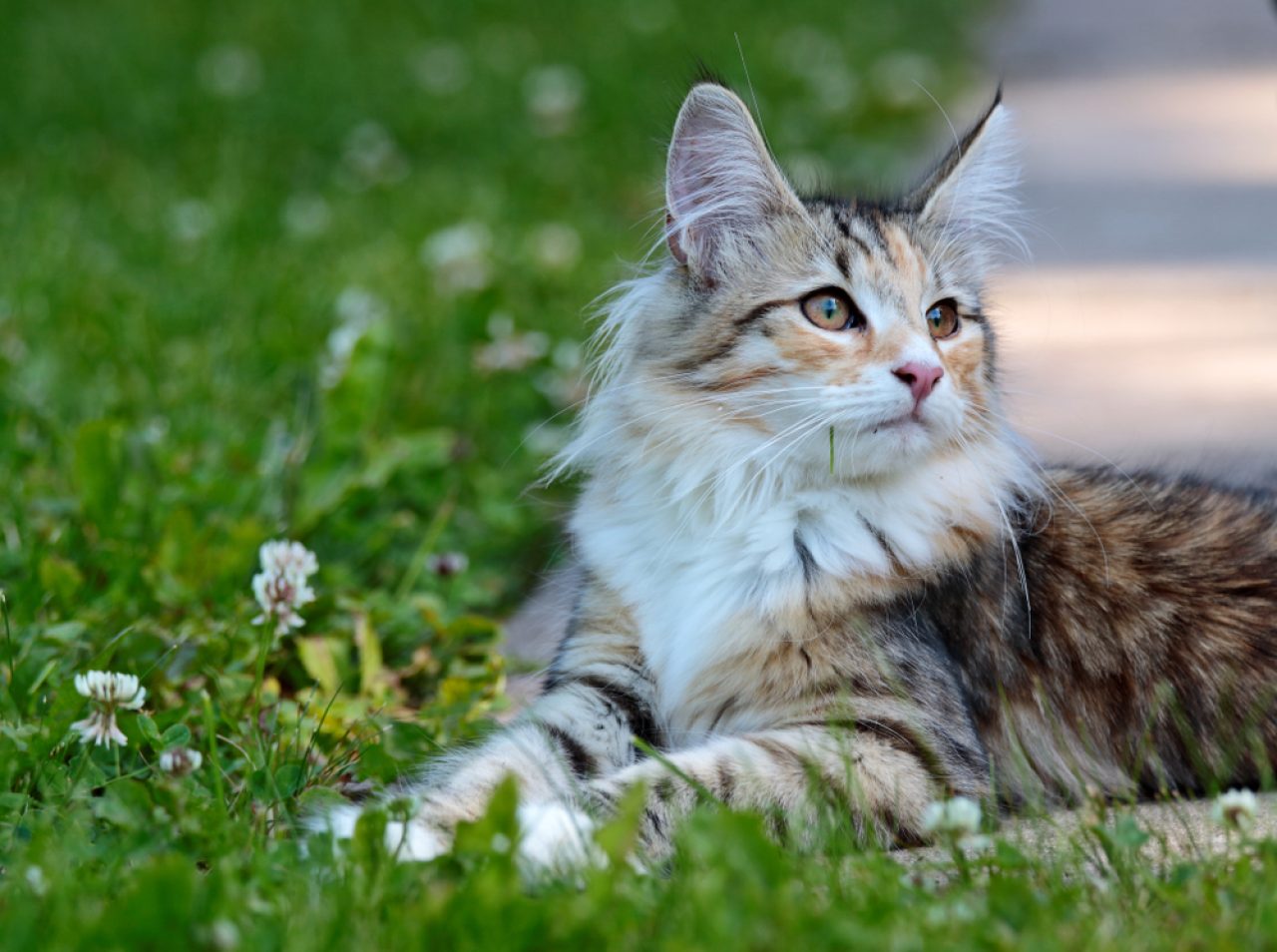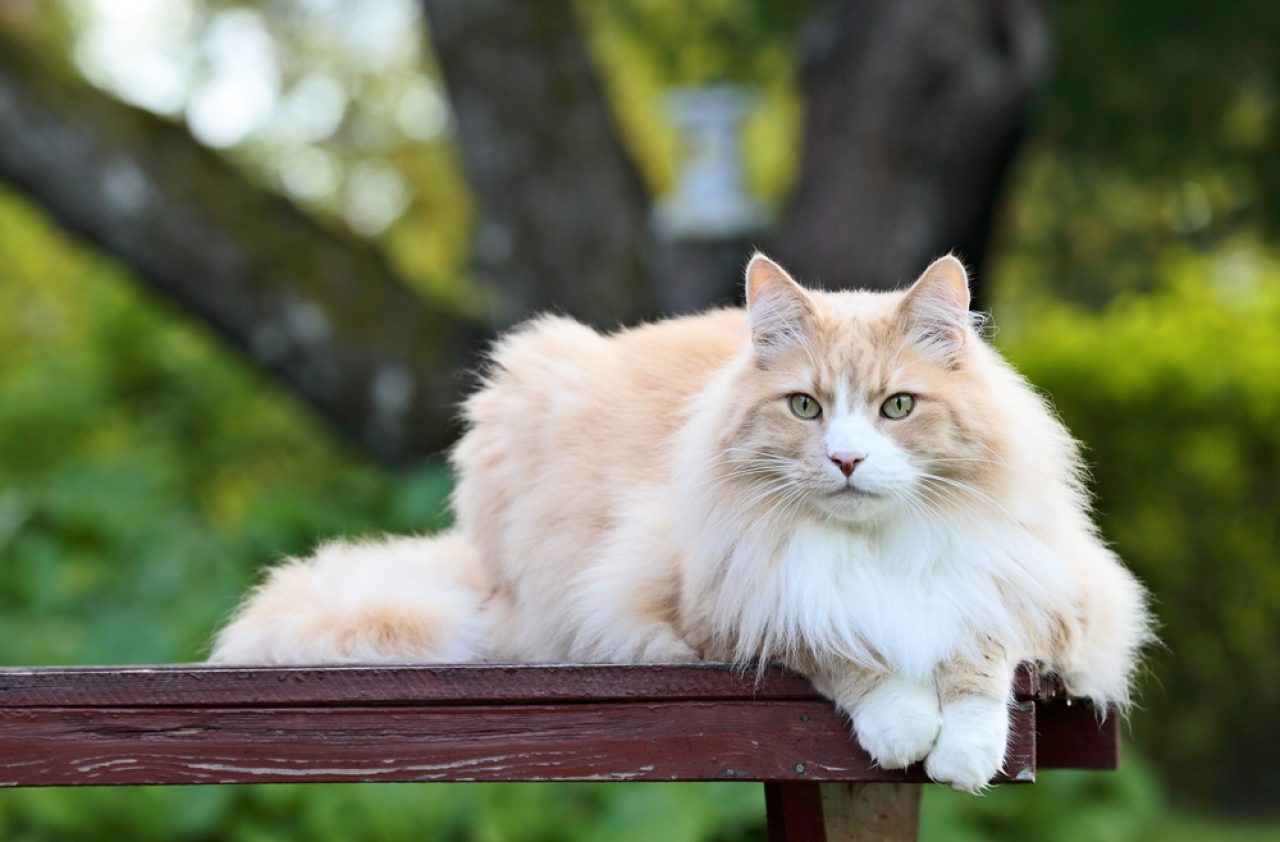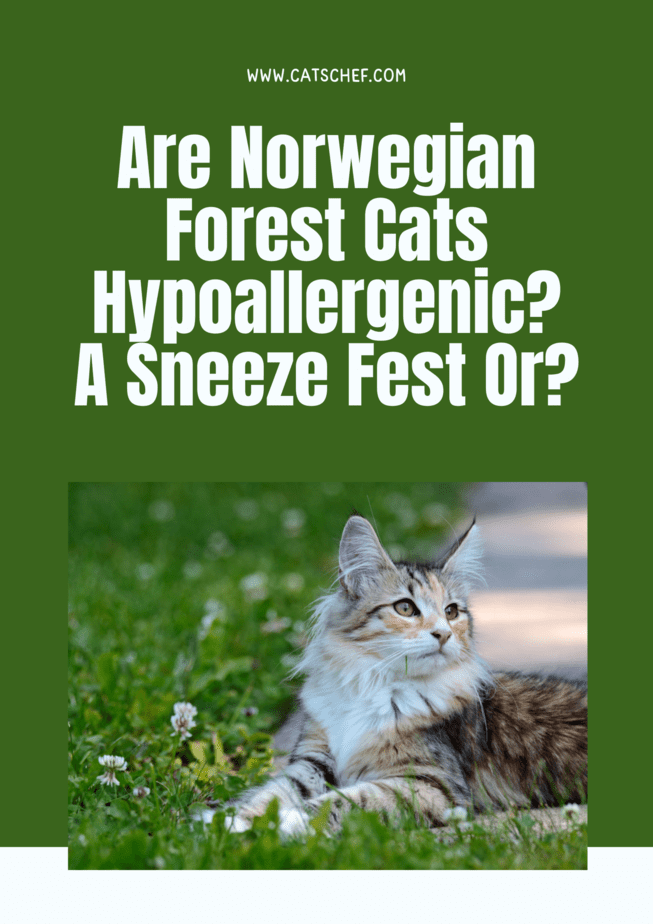📖 Table of Content:
“Are Norwegian Forest cats hypoallergenic?“; everyone who has ever suffered through a stuffed, dripping nose and a sneeze fest Googled that question at least once.
Trust me, there were nights when nothing could have stopped me from drenching my sorrow by searching for better answers than the ones they kept sending my way.
Oh, loving these beautiful cuddle bundles has brought me nothing but suffering! Don’t you dare give me that “Why are you being dramatic?” look… You know what people with the worst possible type of allergy go through!
Why couldn’t my triggers have been peanuts or pollen or something other than the absolutely adorable meowing munchkins?
With that rant out of the way, there’s hardly anything worse than dripping out of every orifice of your body while trying to bond with your fluffer. Getting the “You’re allergic to cats!” diagnosis has probably made your life miserable for a little while. But that doesn’t have to be the case.
And, living with a curious creature that licks your face when you’re crying might sound unattainable. But there are ways you can have a happy coexistence with your cat (or cats!) without sneezing, sniffling, or rubbing your eyes. Truth be told, kitty allergy frolics might be annoying, but they aren’t that dangerous.
And, the things you need to do to ensure both of you (or all of you) have a happy and healthy life are minuscule, to say the least. That’s why you were searching for answers to your “Are Norwegian Forest cats hypoallergenic?” question, right?
Don’t worry, we’re bringing you everything you need to know! And, for starters, Norwegian Forest cats are not hypoallergenic! Keep on reading to find out what makes kitties trigger your sniffling and why these forest creatures aren’t an exception!
What are the causes of the Norwegian Forest cat sniffles?
They’re humongous (not that you should ever comment on a lady’s weight). They’re fluffy (which might be a problem considering some triggers come from fluff). And, they possess the busiest of tails which serves them to protect and hide the secrets of why Norwegian Forest cats aren’t hypoallergenic. We’re kidding!
But we’re not kidding about the fact that most humans seem to think they can get away with keeping a mischievous monster that sheds, urinates, and defecates around the apartment without getting the occasional sniffles or a runny nose. Truth be told, no breed can be 100% hypoallergenic.
Now, most humans don’t understand the meaning of the word hypoallergenic.
As a matter of fact, being hypoallergenic doesn’t mean that a furry friend won’t cause you random outbursts of saliva and mucous. Hypoallergenic means that even though you might experience sporadic splitters, you shouldn’t end up at the ER.
And one of the most common misconceptions seems to be that fluff acts as the only trigger. That’s not the truth. Though that might seem strange, urine, saliva, and dander (dead skin cells) are the ones to blame. These possess the highest levels of a type of protein known as Fel d 1.
Of course, Fel d 1 seems to be the reason why you get watery eyes, a runny nose, and an urge to sneeze the moment you’re sharing the room with your fluffer.
But, the Fel d 1 protein is produced by the sebaceous glands, which means these three aren’t the only sources. We shouldn’t forget about tears, mucous, poop, and fluff, which can make you hate your life as much as the other ones. But why are Norwegian Forest cats not hypoallergenic?
Why are Norwegian Forest cats not hypoallergenic?
Maybe you decided a Norwegian Forest Cat was the one for you the moment you stumbled upon a couple of photos on Instagram. Maybe you’re already a parent to an adorable Norwegian Forest kitten… And you’re not planning on throwing her out even though she’s giving you the sniffles.
Whatever the case might be, you’re wondering why these bad boys aren’t hypoallergenic. When you’re trying to figure out what makes our four-legged friends hypoallergenic, you ought to think of two things.
First things first, kitties that don’t produce that much Fel d 1 protein aren’t that likely to trigger severe reactions. And these breeds aren’t 100% hypoallergenic.
But they’re a better choice for someone who gets watery eyes whenever they catch a glimpse of a cat. Siamese, Bengal, Siberian, Russian Blues, Oriental Shorthair, and Sphynx are some of the breeds that might make for a better addition to your family.
As for Norwegian Forest cats, they’re somewhere in the middle. They don’t produce that much dander or saliva, and they don’t shed as much as some other cats of that grandeur (aka Maine Coons). And shedding was the second thing we were talking about.
Most humans mistakenly view shedding as the culprit for sleepless nights and sniffle marathons. But leaving a trace of fluff everywhere they go doesn’t bode that great for Wegies. Fluff can contain Fel d 1 protein, and therefore can trigger those pesky problems you’re dealing with.
Having discussed that, we can’t say that you should sacrifice the life you love with a fluffer of your choice. We’ve gathered a combination of things you can do to make sure both of you are happy, healthy, and enjoying each other’s company without the sniffles.
How to keep your Norwegian Forest cat without dripping out of every cavity?
This “Are Norwegian Forest cats hypoallergenic?” search might have been a bust. But, that’s not to say there aren’t ways of going through the day without having to contact your doctor.
Whether you’re thinking of getting another kitty or trying to deal with the one you already have, there are some things you can to do make sure everyone gets what they want.
Sure, you might be thinking to yourself: “Wow, they really lied to me and told me there was a hypoallergenic cat out there that wouldn’t trigger me to sniffle and sneeze! What a bummer!”.
And you might be sad that the Roomba has to make your kitty’s life a mystery by following her around 24/7. But, where there’s a will, there’s a way – or something of the sort.
Now, some compromises need to take place. However, there’s nothing better than knowing you managed to find a way for the two of you to live happy and healthy for a long, long time. Here’s what we’ve gathered to make the process free of sniffles, scratches, and torn T-shirts!
1. Make friends with grooming, brushing, and bathing!
Oh, the holy trinity – grooming, brushing, and bathing might not be your Wegie’s cup of tea. These cats have luscious, long coats that need grooming and brushing all the time! This is to ensure nothing gets matted and tangled.
While we’re on the topic of Tangled, Flynn’s strategy to cut off most of Rapunzel’s hair might work for your long-haired beauty. But, on the off chance that you don’t find bald Norwegian Forest cats attractive, you can stick with regular care.
Make sure you groom and brush your cat’s coat two to three times a week, depending on the season and the amount of shedding. On the other hand, bathing might be a struggle!
Wegies hate water and won’t shy away from scratching every part of your body that’s on display. And they have waterproof coats which make the whole bathing thing a challenge. Consider taking them to the groomer whenever you’re looking to remove that dander out of the way.
2. Don’t let your Forest cat lick you – even when she really, really wants to
Norwegian Forest cats are some of the most affectionate, appreciative, and adorable fluffers out there! And licking seems to be a way for them to communicate how they feel about you. That’s why they lick themselves, kittens, or even other kitties.
Not to mention that there are “studies” showing that cats think of us as bigger, clumsier cats! And that means we can’t run away from the lick of love!
But you might have to! As we mentioned beforehand, saliva can contain a bunch of Fel d 1 protein which can trigger your sniffles. As well as other health niggles you might experience when hanging out with fluffers.
Make sure you teach your Forest cat that she’s not supposed to lick you. And, on the off chance that the teaching thing fails, make sure you stop her from licking you every time she tries.
3. Always wash your hands – even when you haven’t spent a couple of hours petting her
Goes without saying that hygiene saves the day. Whenever you’re dealing with dander, fluff, mucous, or even droplets of urine flying around the apartment, make sure to wash your hands.
Even after cuddling with her the entire morning. Or after petting her for a couple of minutes. Or even after brushing against her for a second.
Trust me, you never know what’s going on under that waterproof undercoat. Bacteria, parasites, and dander could send you to the ER before you get the chance to utter, “Mrs. McFluffer, get me my EPIPEN!”
And, here’s the thing. When you’re living with a fluffy, shedding-every-day type of creature, you can never go wrong with cleaning, right?
Whether you’re allergic or not, you can take precautions. Vacuuming the carpets, mopping the floors, and scrubbing everything she’s ever touched can save you a bunch of trouble. Taking medication, bothering your doctor, and wondering, “Am I getting a cold or am I getting an allergic reaction?!” doesn’t sound fun, right?
4. She can’t sleep on your bed – even when she meows your ears off
Maybe she’s gripping your duvet covers with her claws and begging you to leave her there. Maybe she’s waiting outside your bedroom door, meowing and purring to make you feel guilty and sleep with her.
Whatever the case might be, you shouldn’t succumb to her wishes – as much as you might want to.
Sleeping, lounging around the floor, napping on the sofa and similar activities might increase the amount of dander and Fel d 1 protein that “rests” on top of your furniture and flies through the air.
Make sure you minimize the time she spends doing those things. Or even prepare a separate space where she can do whatever she wants without making you gauge your eyes out.
5. Consider getting someone other than you to do the dirty work – outside!
Come on, that would be a great way of getting out of cleaning duty! “Honey, would you mind cleaning McFluffer’s litterbox? My nose won’t stop running and my sneezing’s getting worse!”
And, suddenly, you have the entire day for yourself – drinking mimosas, getting a manicure, and watching your fav TV show!
But, on a more serious note, you shouldn’t take your allergies lightly. And you might not suffer more than an occasional sneeze fest. But, who’s to say that one moment of extreme fluff attack won’t result in anaphylactic shock?
Consult with your doctor, take your medication, and don’t shy away from getting help when you deem that necessary. Good luck!
